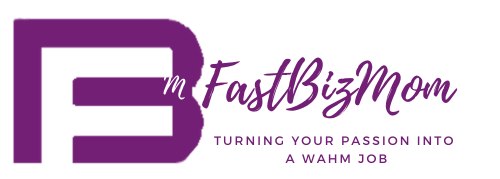Working from home with kids can feel like trying to juggle flaming swords while someone's…

So You Think You Can Work From Home (WFH)?
Long before COVID-19 arrived, working from home (WFH) was an option for many, in theory at least, as long as their work could be reliably completed by phone or internet-connected device.
The main preventative was trust: managers simply didn’t trust that employees would be as productive without the added accountability of watchful eyes and in-person check-ins.
Now that the great WFH experiment has been under way for six months, with more than 75 percent of office workers having tried working remotely at least one day a week, employers have a more accurate appraisal of just how well workers perform out of the office compared to in.
A recent survey of more than 1,700 small-business leaders is shedding light on how different industries are faring with the transition to a remote workforce. Not surprisingly, higher-paying, white-collar jobs in information and science sectors are reporting the least productivity losses or highest productivity gains. Meanwhile, industries that deal directly with physical resources, like transportation and warehousing, or offer face-to-face services like accommodation and food services, reported the greatest productivity losses.
Even if your job lends itself to a relatively smooth transition to working remotely, that doesn’t mean the WFH life isn’t without its own mix of unique challenges. Here are some of the biggest mental hurdles to being productive while working from home, and how to discipline yourself to overcome them.
Zoom fatigue is real.
That exhaustion you feel after a day filled with video-conference meetings? It’s a real thing. Much like extended periods of reading or a long day of driving, video conferencing can sap large amounts of your energy, largely due to the constant strain on your eyes.
Brainwave research conducted by Microsoft shows that “overwork and stress are significantly higher in video meetings than in non-meeting work like writing emails.” Fatigue from trying to sustain concentration typically sets in around 30 to 40 minutes into a video meeting.
To combat this particular type of fatigue, consider turning off cameras if only audio is actually necessary—or, at least, turn off the self-view feature to reduce anxiety about your own self-presentation and the temptation to constantly check how you appear to others.
For team leaders, create a clear agenda for meetings so the first 20 minutes or so aren’t spent in directionless chitchat (although don’t forget that intentional socializing can be a good thing!), and build breaks into longer meetings so participants have a moment to recharge. Concentration tends to dip around the 45-minute mark.
The number one problem shared among entrepreneurs today is finding, vetting, hiring, and retaining expertise.
Distractions: Here, there and everywhere.
The modern workplace is largely designed to encourage focusing, facilitate collaboration, and eliminate distraction—your ad-hoc home office, not so much.
Sure, at the office, there’s still water cooler talk all of the tempting websites and social media channels your internet-connected device can offer up. But when working from home, the temptation to distraction is compounded exponentially.
Why plow forward through your work tasks when you could knock out that tower of dirty dishes that’s been calling you from the sink? Check the mail? Walk the dog? Take a little break to stream whatever binge fest that work is currently interrupting? And this isn’t even to mention distractions related to who else might be sharing the household, like the kids trying to do their online learning.
You can minimize distractions and become more productive if you think intentionally about both your physical space and digital tools.
Set up a dedicated work zone in your home that’s reserved exclusively for work-related tasks. Declutter that space to minimize distractions. Psychologically, this can benefit you as well, as it can keep work-related stress from being associated with other areas of your home, like your dining table, couch, or bed.
Treat your distractions like carrots to motivate you. Since concentration tends to wane around the 45-minute mark, take a small break and reward yourself with something else you wanted to do briefly, like walking the dog. This can get your blood flowing and help you return to work feeling reinvigorated with a clear head.
Practice discipline digitally as well. Take a page out of your boss’s playbook and install site-blockers on your web browsers if you must to eliminate absentminded surfing. If you’re constantly attending to notifications pinging on your smartphone, put it away in a drawer for a time.
As one 2017 business school study found out, cognitive capacity is significantly decreased by the mere presence of smartphones. The act of putting your phone out of sight and reach, rather than consciously, repeatedly, having to tell yourself “Don’t touch it,” can provide a significant boost to productivity.
Keeping the 9-to-5 between 9 and 5.
One of the biggest attractions to the WFH life is the increased flexibility it affords. One of the biggest downsides to that flexibility, however, is that the workday tends to unfurl beyond normal working hours.
When punching in at the office, the boundaries are clear: I’m at the office—I’m on the clock. When your home is your office, and you’re there basically 24/7, are you ever really off the clock?
Unfortunately, for many remote workers, the answer seems to be “no.” A recent study by NordVPN, which provides virtual private networks for companies, revealed that, following March 11, 2020, remote workers were logged on for an average of three extra hours per day in the U.S. and two extra hours in the U.K., France, Spain, and Canada.
In order to protect your personal life—and your sanity—it’s important to set clear boundaries for your work life, and then honor those boundaries. Decide what hours are your WFH hours and stick to them, especially by managing the distractions mentioned above. Triage your work communications after hours so that you’re only responding to urgent requests, saving all other matters for the next day.
Allowing that constant safety-net thought, “Oh, I can always work extra on this later tonight,” will only let your productivity slip during normal work time and lead to feelings of burnout more quickly.
Loneliness: The quiet productivity killer.
An often overlooked facet of regular work life, loneliness is getting more attention now that so many people have shifted to working from home and are starting to feel the effects of extended isolation.
The bottom line is: loneliness can hurt job performance. A lack of positive social interaction can cause irritability, anxiety, depression and an overall lower sense of quality of life. In turn, such emotional states can hurt collaboration and be a roadblock to productivity, especially if such feelings detract from the sense of purpose someone feels in their career.
Whereas previously you may have taken your social life for granted, buttressed as it was by casual encounters with coworkers around the water cooler or by informal interactions at public places now made unlikely due to health-safety measures, now’s the time to be proactive about your relationships.
Take advantage of your lunch hour. Propose a video chat or phone call with a friend or family member while you eat. Certainly, others are feeling the sting of loneliness as they’ve shifted to WFH, too.
If you have the extra space, consider setting up a WFH cohort with close friends so that you have each other’s company during the day. Or, look into renting a desk at a coworking studio where the environment might be less isolating, if possible.
It may feel strange to have proactively strategize your social life, but these are strange times, and the investment in meaningful relationships will reap dividends, both for your personal life and your professional life.



